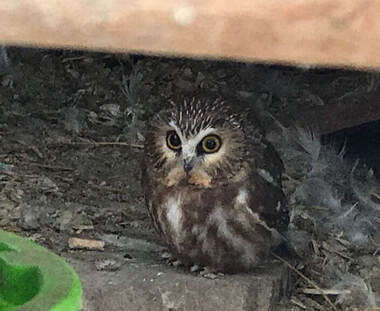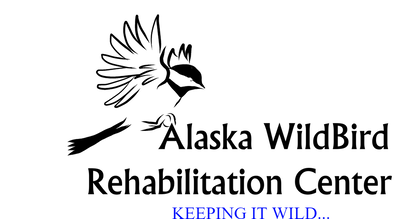Chicken Coop Safety

Large owls, hawks and eagles are all potential predators of our beloved flocks of chickens and ducks. Finding a way to avoid ‘death from above’ is a challenge particularly if you want to give your birds a little room to roam. The best protection is a solid roof over an enclosed run, but this isn’t the only solution.
A rigid netting roof, e.g. welded wire, chicken wire or hardware cloth is also effective and safe for both predator and prey. Although it is inexpensive, we do not recommend nylon netting because raptors may not see it when attacking and then become entangled, like this Great Horned ) owl we were recently called out to extract.
Although they do not pose a threat to your chickens, smaller owls hunting rodents attracted to your chicken run may also become entangled in nylon netting. If you do choose to use nylon netting, we encourage you to tie streamers or holographic flash tape throughout the net – centrally and along the edges – to reduce the chances that a raptor will hit the net.
If you opt for an uncovered run, the chance of predation can be reduced by removing potential perches such as tall trees or posts from the surrounding area. If the raptor has to perch farther away, one of your chickens is more likely to spot it before it strikes. For potential perches that can’t be removed (rooftops for example), consider installing bird spikes. Some sources suggest that you provide protective cover, e.g. tall clumps of grass, bushes or artificial shelters in the run so that your flock can quickly find a place to hide. While most large raptors will not follow prey into dense cover, we have goshawks that are very adept at hunting in dense woodland and their preferred prey includes game birds. Be aware that the risk of attack may be higher during April and September when raptors are migrating through south-central Alaska.
Finally, remember that birds of prey are federally protected. Contact the U.S. Fish & Wildlife Service for additional information.
A rigid netting roof, e.g. welded wire, chicken wire or hardware cloth is also effective and safe for both predator and prey. Although it is inexpensive, we do not recommend nylon netting because raptors may not see it when attacking and then become entangled, like this Great Horned ) owl we were recently called out to extract.
Although they do not pose a threat to your chickens, smaller owls hunting rodents attracted to your chicken run may also become entangled in nylon netting. If you do choose to use nylon netting, we encourage you to tie streamers or holographic flash tape throughout the net – centrally and along the edges – to reduce the chances that a raptor will hit the net.
If you opt for an uncovered run, the chance of predation can be reduced by removing potential perches such as tall trees or posts from the surrounding area. If the raptor has to perch farther away, one of your chickens is more likely to spot it before it strikes. For potential perches that can’t be removed (rooftops for example), consider installing bird spikes. Some sources suggest that you provide protective cover, e.g. tall clumps of grass, bushes or artificial shelters in the run so that your flock can quickly find a place to hide. While most large raptors will not follow prey into dense cover, we have goshawks that are very adept at hunting in dense woodland and their preferred prey includes game birds. Be aware that the risk of attack may be higher during April and September when raptors are migrating through south-central Alaska.
Finally, remember that birds of prey are federally protected. Contact the U.S. Fish & Wildlife Service for additional information.
